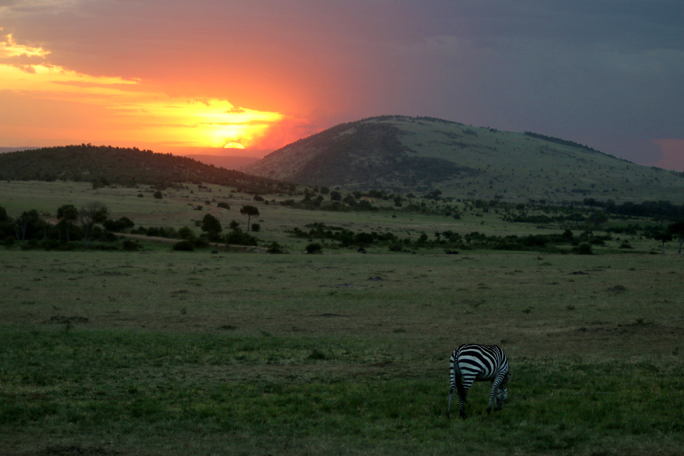Note: This article pertaining to Zebras in Africa: A Photographic Essay was originally published on Friday, July 3, 2015 at 3:02 in the afternoon and has been updated.
There is no mistaking those distinctive striped equids known as zebras, which abound plentiful in Kenya — especially in the Masai Mara National Reserve, where I went on safari in 2015.
Zebras in Kenya: A Photographic Essay.

Zebras tend to be social animals which congregate in herds; and within those herds form groups known as harems consisting of one stallion and up to six mares — along with their offspring, of course.

They also seem to be rather playful…

…but they are not known to be sociable to human beings, however.

Zebras can sleep standing up; and they are constantly grazing on a variety of different types of grasses. They are known to migrate up to as many as 1,800 miles for food.

Zebras are considered to be nomadic, as they tend not to stay in one place.

Without a defined territory, zebras are potentially vulnerable to a number of predators, which include lions and hyenas — and even crocodiles when zebras cross through rivers. Zebras protect themselves from predators by huddling together in a group while the stallion attempts to thwart the predator from attacking — and zebras are quite vocal when they sense or see a predator within the area.

I could not resist posting the looks on the faces of both zebras in the photograph shown below. Please feel free to come up with a caption of your own which you feel best describes the photograph and post it in the Comments section below, as I will look forward to reading them.

Notice how the ears are pulled backwards on the zebra to the left in the above photograph, which typically means that it is angry. When a zebra is calm — or, in this case, “friendly”, as is the other zebra in the above photograph — its ears stand erect. If a zebra is frightened, its ears tend to push forward…
…and speaking of ears, zebras have excellent hearing in addition to their equally acute senses of sight, smell, and taste.
Final Boarding Call

As the sun was setting behind the southern Kenyan mountains, a lone zebra grazes for its dinner — and it was time for me to grab some food as well.
I had the time of my life on safari in Kenya — even with the base camp itself and with what was called a box lunch. I even enjoyed meeting the people. The only negative part of the trip was that I never saw a leopard.
If you would like to see some of the animals which I photographed during a safari in which I participated in Kenya back in 2015 — I still have additional articles to post, including one featuring hippopotami — please refer to these photographic essays…
- Cheetah — When I was unexpectedly treated to witnessing a cheetah surprising its prey, killing it and feasting on it
- Giraffe — When I simply hung around with the awkward but graceful giraffes
- Zebra — Watching zebras and their sometimes quirky behavior was interesting to me
- Lion — Viewing of the lion with one eye with his lioness companion
- Elephant — Hanging out with elephants at a watering hole
- Buffalo — Enjoying hanging out with elephants at a watering hole and witnessing the migration of large herds of cape buffalo
- Monkey — Observing playful vervet monkeys
- Baboon — Watching an olive baboon nursing her young
- Rhinoceros — Spotting a lone black rhinoceros crossing the road
- Flamingos — Dozens of pink greater flamingos; as well as pelicans and other waterfowl
- Birds — …as well as the different varieties of birds which I spotted while on safari in Kenya
…as well as of the people of the Maasai society.
- An Introduction and Welcome to a Maasai Village
- Homes Constructed With Cow Manure?!? In Villages of the Maasai People of Kenya, Yes
- How to Create Fire Without Matches or Lighters by Maasai People: A Photographic Essay
- Maasai People of Kenya: A Photographic Essay of Random Images
All photographs ©2015 by Brian Cohen.

